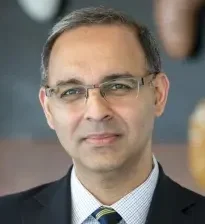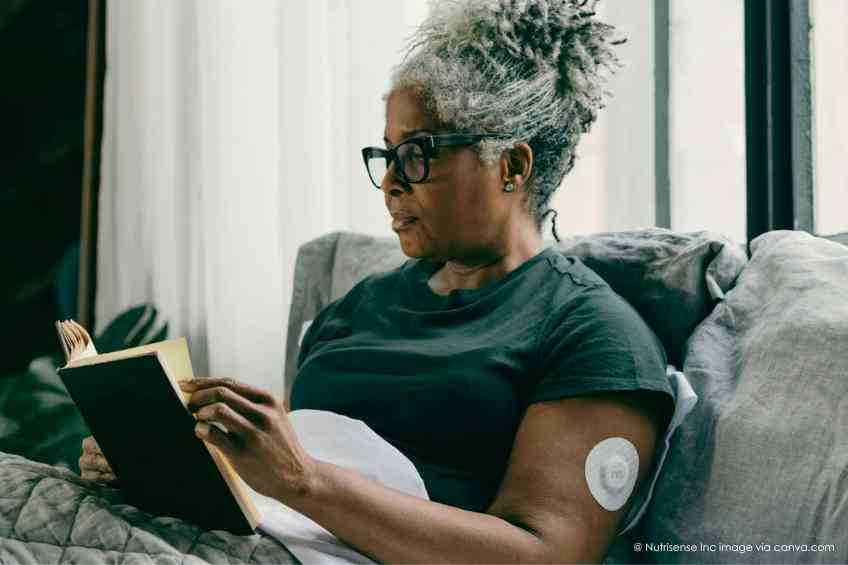Medicine is changing and changing fast, fueled by technologies like biometrics, sensors and artificial intelligence. Just what these changes will mean for patients isn’t entirely clear, although they are largely seen as positive, even if their full impact won’t be realized for years if not decades. Dr. Jag Singh recently spoke to WellWell in hopes of lending some insights on just what can be expected and when as technology effectively reinvents medicine. Read on.
What are biometrics and how do they differ from sensors?
I think it’s important to distinguish between the two. Biometrics are better understood as a measure of individual uniqueness. Those can include things like fingerprints, facial recognition and voice recognition. They’re kind of digital markers of who you are to identify you. Sensors are slightly different. They are devices that respond to physical stimuli and they measure those physical stimuli. Those physical stimuli can be temperature, physical activity, motion, respiratory rate or sleep. One easier way to understand this is to understand that the word sensor is derived from the word senses. Our touch, auditory senses, our visual senses and our taste are all senses. Sensors are derived from these senses because there’s a really cool saying from an author Immanuel Kant who said that all knowledge comes from our senses. All these senses that come into our body through the neural network go to our graphical processing unit, which is our brain, and give us all of this knowledge. So, I think it’s important to recognize that sensors in the healthcare space are devices that can pick up these senses and give us physical attributes for them that based on those measurements, we can then decide what we need to do for that particular patient or individual, whether there’s any information we can gather respect to their disease or not.
What makes these devices so powerful and such an intriguing element?
If you look at the future of clinical care, it is going to be something that’s virtual and censor-aided, powered by artificial intelligence that will be integrated into clinical workflows and translate into better clinical outcomes. So, there are many aspects to care, but sensors are the central part of this whole equation of how care pathways in the future will look because sensors allow us to receive continuous data about an individual, whether they’re well or unwell. And that continuous data allows us to understand what disease process they may have. It can help us predict, it can help us risk stratify and can allow us to prevent disease or intervene early before something bad happens. They’re powerful in the form of giving us objective evidence. In fact, if I’m seeing a patient virtually over a TV screen, but if the patient can transmit their heart rate, blood pressure, respiratory rate and oxygen saturation through sensors directly to me as a clinician, I’m being powered by objective evidence as to how they are feeling across that screen, rather than just having a glorified telephone call or a virtual call with them. So, I think sensors are powerful because they can provide information about anyone anywhere at any time.
Where do we see it taking root now? And where are we going to see the greatest impact for these sensors?
Let me categorize healthcare, since that’s what we’re focusing on, as a pyramid, and divide it into three levels. The largest part of the pyramid is mainstream care, which is wellness. The second part of the pyramid is midstream care, which is chronic disease. And at the upper end is complex disease. So now we already have sensors that are built into our watches and rings that can provide us data regarding our physical activity, heart rate, sleep, steps, our mental faculties and some of them can assess behavioral patterns too. There’s already information that is being provided at the wellness level. That’s where I think sensors have already made an inroad. They are now being upgraded to help us manage chronic diseases, which is the midstream part. So those chronic diseases, just to give you an example, are diabetes, hypertension, or heart failure. And these can be measured, or their progress and their clinical stability can be measured by sensors that then allow us to intervene appropriately. So, the first step is wellness. The second step is chronic disease. And the third step where sensors will eventually have a role is in complex inpatient care. Some of that is already happening. When a patient is lying on their bed in the hospital, not only does the bed have a sensor to measure their weight, but it can also have a sensor to measure their respiratory status. It can have a sensor to measure whether they’re in heart failure and what the fluid status in their lung is. So, you can imagine that sensor grades will be overall engaged in looking after patients at every stage when they’re well, when they’re unwell or when they’re really sick.
What’s the difference between being hooked up to machines in a hospital that monitors blood pressure and heart rate and how we’ll use these sensors in the near future?
I’m going to try to keep this simple because there are many complex kinds of sensors. But simply at this point in a hospital setting, you have a pulse oxidation saturation monitor on your finger that measures your oxygen saturation, measures your respiratory rate. You have a blood pressure cuff that measures your blood pressure. And you have ECG electrodes that have ECGs that can measure your heart rate. All of these are fixed variables that have been there for many years and continue to be in the standard care of any patient. You take this one step further and you can have sensors in a hospital environment that can not only measure all of these things together but can also measure your posture, your position in the bed, can measure the fluid levels in your body, can measure your respiratory rate as well as if you’re developing heart failure or not or can measure your weight. There are ambient sensors in the room that can measure your risk of falling. It can assess forget stability. So, there are many complex forms of inpatient care. I was just on a call just before this where we’re looking at sensors that can measure cardiac contractility and cardiac output and all the invasive hemodynamic measures that we have where you have to put catheters inside the body to measure the pressures inside the heart. Now you can do them non-invasively by just a surface sensor which can pick up these signals, interpret them using AI algorithms and then allow us to manage these patients without the invasive lines that we’ve always been giving these patients and even continue to give them today. These sensor developments are going to simplify the way we manage these patients with the intention that a lot of these patients who require invasive and sophisticated monitoring can get a lot of this care at home through home health strategies because now we can have the same objective evidence from these sensors that can be remotely transferred to a command station in the hospital. You can effectively monitor the patient while they’re at home with some visiting nurse services or someone else who can look after them. So, you really enhance the patient experience and potentially the outcomes.
How close are we to seeing this, if not widespread, more integrated at this point? The type of complex sensor monitoring you talk about.
We’re already seeing it in parts in certain tertiary academic centers like ours, we’re seeing it in bits and parts, but it’s not evenly distributed. There’s a lot of variability. Many of these sensor strategies are in their early stages of validation. And, they have to be validated diversely because they have to serve a diverse patient population. They’re not all a part of some phenomenal integrated remote monitoring sensor-based platform. That’s the holy grail. That’s the future. I would say we’re hurtling quickly in that direction, but we’re still a fair distance away.
What types of sensors are being used for wellness and chronic diseases? Are they like Fitbits? Or even in the future, are they something embedded in us, implanted? What are the options?
There are many kinds of sensors. I am a cardiac electrophysiologist by trade. That means I am one of those cardiologists who put catheters in people’s bodies to burn circuits in their hearts but at the same time implant pacemakers and defibrillators and implantable loop recorders. So, these are devices that I implant in people’s bodies for cardiac conditions, but these devices have sensors that can measure the same things that I told you, heart rate variability, autonomic system parameters, sleep, respiratory rate, transthoracic impedance and whether your lungs are filling up with fluid. Now these are implantable sensors, but now you also have variable sensors. So, I’m wearing an Apple watch and an ORA ring right now. From these, you can measure the same parameters that I just talked about through implantable devices. But beyond that now, we have a slew of variable sensors that can measure continuous glucose monitoring that can be used for diabetes. There are newer sensor strategies that are being developed to measure BNP or troponin that can measure the risk of a heart attack or heart failure. There are sensors on toilet seats. These are ambient sensors that can take your weight, record your ECG and also assess your microbiome all at the same time. So, there are ambient sensors, there are variable sensors and there are implantable sensors. In the future, you will see all of these sensor strategies integrated. But at this point, even if you can have single sensor-based approaches for single diseases, it’s good enough because we’re able to provide better individualized care.
Is the use of sensors a proactive vs. reactive treatment response? Are we going to try and get to a problem before it gets worse or deal with a problem once it comes up?
The ideal situation would be to look at this as a proactive strategy. And I say proactive strategy because you don’t want the disease state to develop. For example, if you can catch diabetes in the pre-diabetic stage and take care of it, we know that it’s a lifestyle disease in many individuals. You can actually prevent that from occurring. And the same thing with hypertension. On the flip side, that doesn’t mean that you don’t implant it in somebody who already has the disease state because now you can react to their clinical perturbations and individualize the way you manage those patients. So, I think it is both reactive and proactive, but the intent is to have sensor-based approaches that can be proactive so that you can predict, you can risk stratify and then you can prevent disease in most of these individuals.
Is it just about how monitoring treatments are taking effect or is there some element that also benefits treatment?
Let’s take diabetes as an example because I’m quite sure most of your listeners will recognize that diabetes is a challenging thing to monitor, and people take insulin as well as medications for it. And they have to usually finger-stick themselves three times a day to know what their blood glucose level is. And they don’t know what their blood glucose level is for the remaining part of the day besides the time when they stick their fingers. So, if you have an implantable sensor that provides you with continuous glucose monitoring minute to minute, second to second, whenever you need it, you can check what the glucose level is. You can check what the levels are before a meal and after a meal so you can see what the impact of that meal was on your blood glucose levels and how you need to change the protein-carbohydrate content of your meal so you can better control your blood sugar levels. Or how do you need to adjust your medications or your insulin levels to better treat your disease? So, the idea of a sensor is to provide continuous monitoring that can then enable individualized treatment strategies.
But the ultimate goal is to really empower the patient to be able to look after themselves. And this is a concept I call MYOD, it’s called manage your own disease. One of the reasons why healthcare is non-sustainable is because everybody is on their own terrain. But if patients were to have some skin in the game and could take some ownership of their own disease state with this continuous feed of data, you can only imagine that they would have better outcomes. They would be able to look after themselves better. And it would translate into healthcare costs reducing over time.
Your book, Future Care, deals a lot with both biometrics and sensors. You mention ‘the reinvention of medicine.’ Is that how you define this technology?
When I talk about the reinvention of medicine what I’m really saying is that we need to reinvent our clinical care pathways. And when I talk about that, I also say that the future of care is sensors and biometrics and they are a small component of them, but they need to be integrated with virtual care strategies. They need to be powered by artificial intelligence, and they need to fit into the clinical workflows so we can deliver better care. We need to step away from the conventional transactional care strategies that we have. When you have an illness or you see your doctor, you see them on a six-monthly basis or a yearly basis. But you don’t fall ill on a six-month or yearly basis. So, what I’m saying is we need to create strategies for continuous monitoring. We have to move from this transactional mode of care into something more continuous so that we can predict and prevent disease and provide the best individualized treatment strategy. So, it’s more of a reinvention of care, but added to that is artificial intelligence, which we haven’t talked about. And I think AI-based strategies can, beyond sensors, better enable us to re-stratify disease and, at the same time, better enable us to treat patients in a more individualized way. And I think that’s another part of the equation that we need to be paying attention to.
Can you define how AI plays into this? How would that work? What is that going to do for people?
You have all these sensors sending all this data. Who’s going to monitor the data and how are you going to integrate the data? How are you going to interpret the data and how are you going to then take action based on that data for just one individual, let alone scaling it at a much larger level for hundreds of thousands of individuals? And the answer to that is, you can have data without information, but you can’t have information without data. So, this is where we need artificial intelligence strategies to help us collect, curate, annotate and analyze this data to provide us with the interpretation and the action that needs to be delivered that can be scalable. And this can be done for individual disease states. At the same time, it can be done collectively in remote monitoring platforms. So, you can look at the continuous flight paths of different patients to see what their trajectory is. You can intervene proactively. This is where artificial intelligence comes into play. For example, you can look into the eye of an individual, look at the retinal photograph, and you can predict what their blood pressure is, what their diabetes control is, whether they have kidney disease or whether they’re going to develop Alzheimer’s in the future. Now, how is that possible? That’s possible using convoluted neural networks by looking at deep learning algorithms, looking at their eye pictures that can predict this. That’s where AI will allow us to be better in our predictive analytics of how we look after our patients.
What about the medical community? Are they embracing sensors, biometrics and AI? Is there resistance to this?
All of us love to practice medicine the way we’ve learned it. And many of us have learned it in the traditional conventional way where it’s all about one on one and meeting the patient. With the growing burden of disease, shifting demographics and the rise of advanced technology, we now have the processing power and connectivity to deliver care in a more integrated way—combining the efficiency of technology with the essential human touch. There is resistance. Obviously, there are people who are early adopters and there are people who are late adopters. But I think folks have figured out that this is the way medicine will be practiced in the future. We have to adapt to the times. We have to be able to give the highest possible level of care that’s individualized. And that doesn’t happen without all this information being curated and analyzed in a sophisticated fashion. Just the simple stethoscope of the past may become a relic in the future if you have all these other objective parameters that are being fed to you in a more consistent and continuous way. So, I think the human touch is a crucial component, something most clinicians like me feel is really important. But we have to recognize that we have to move along with the times because sensor-based approaches and AI-based approaches are becoming a part of how we deliver care. And I think most clinicians have started accepting that, but with some degree of resistance, which I think is gradually dropping away.
I imagine that the acceptance of telemedicine helps facilitate this a bit. Do you still feel you can connect to a patient personally?
There’s this whole concept of bedside manners and website manners and learning how to interact and interface with a patient on the web over virtual care strategies is slightly different from the bedside. And I think that’s something that is becoming a part of the curriculum of new trainees in clinical medicine. COVID catalyzed that transformation into virtual care, and I think we recognize that’s something now we need. But appended to that virtual care, I told you also that many of us feel that virtual care, just to tele-visit, sometimes is like a glorified phone call because you don’t have objective measures at the other end of the phone call, and that’s where sensors will provide that objective evidence and will transform the way we look after our patients. And if you have a lot of sensors with a lot of data over several months of recording, that’ll be analyzed by AI. So yes, I think there will be some change in the pathways and the acceptance of telemedicine has certainly become easy, but I think the next steps of acceptance of using sensors and AI in the same telemedicine interview will also become a way we function in the future.
What are the challenges of moving this along?
So, the challenges are obviously the hospitals look at it from a return on investment. Is this form of care reimbursed? Is it across state borders or not across state borders? Does it translate into better clinical outcomes? And is it cost-effective? Does it save us money? So many of those things are barriers to acceptance, which you can imagine in our capitalistic society that those things are really important. And I think those are things that we’re accruing evidence for as we move along. And the barriers to adoption will diminish as we get that data. And much of it is already coming pretty fast along the way. And there are some things that we may not have the data for and we recognize that that seems like the best way forward. And that’s where I think academic health care centers and academic health care plans will have to step out of their comfort zone and say, hey, let us experiment a little bit out here and see if it translates into better outcomes and reduces costs. And then we can make this center stage. But somebody is going to have to be willing to take some risks to change the care pathways faster.
What are the biggest misconceptions that people may have about sensors and biometrics?
I think there are people in different phases of their lives who will have different misconceptions. Depending on how comfortable they are with data, how comfortable they are with digital devices and how comfortable they are with looking at the interpretation of their health through biometrics and sensor-based data. But trying to give this a philosophical view, I think people are most concerned that too much connectivity can actually disconnect us to some extent or this attempt for personalized medicine through digital strategies can make medicine impersonal because you’re not seeing the doctor and it’s all sensor-based approaches and you’re just getting your data analyzed and being told what to do. And I think it’s incumbent upon us to ensure that there is a hybrid strategy out here. That you have the human touch that is integrated with this digital wizardry. Because I think it was Francis Peabody who said that the secret of the care of the patient lies in caring for the patient.
About Jagmeet Singh, MD, PhD
 Dr. Jagmeet P. Singh is a distinguished cardiologist specializing in cardiac electrophysiology, with a notable career dedicated to advancing heart rhythm treatments and digital health innovations. He serves as a professor at Harvard Medical School and has held prominent positions at Massachusetts General Hospital, including Associate Chief of the Cardiology Division and the Roman W. DeSanctis Endowed Chair in Cardiology. He is also the author of several books, including Future Care: Sensors, Artificial Intelligence, and the Reinvention of Medicine. It is available on Amazon.
Dr. Jagmeet P. Singh is a distinguished cardiologist specializing in cardiac electrophysiology, with a notable career dedicated to advancing heart rhythm treatments and digital health innovations. He serves as a professor at Harvard Medical School and has held prominent positions at Massachusetts General Hospital, including Associate Chief of the Cardiology Division and the Roman W. DeSanctis Endowed Chair in Cardiology. He is also the author of several books, including Future Care: Sensors, Artificial Intelligence, and the Reinvention of Medicine. It is available on Amazon.
Please visit Jagmeet Singh to learn more.













